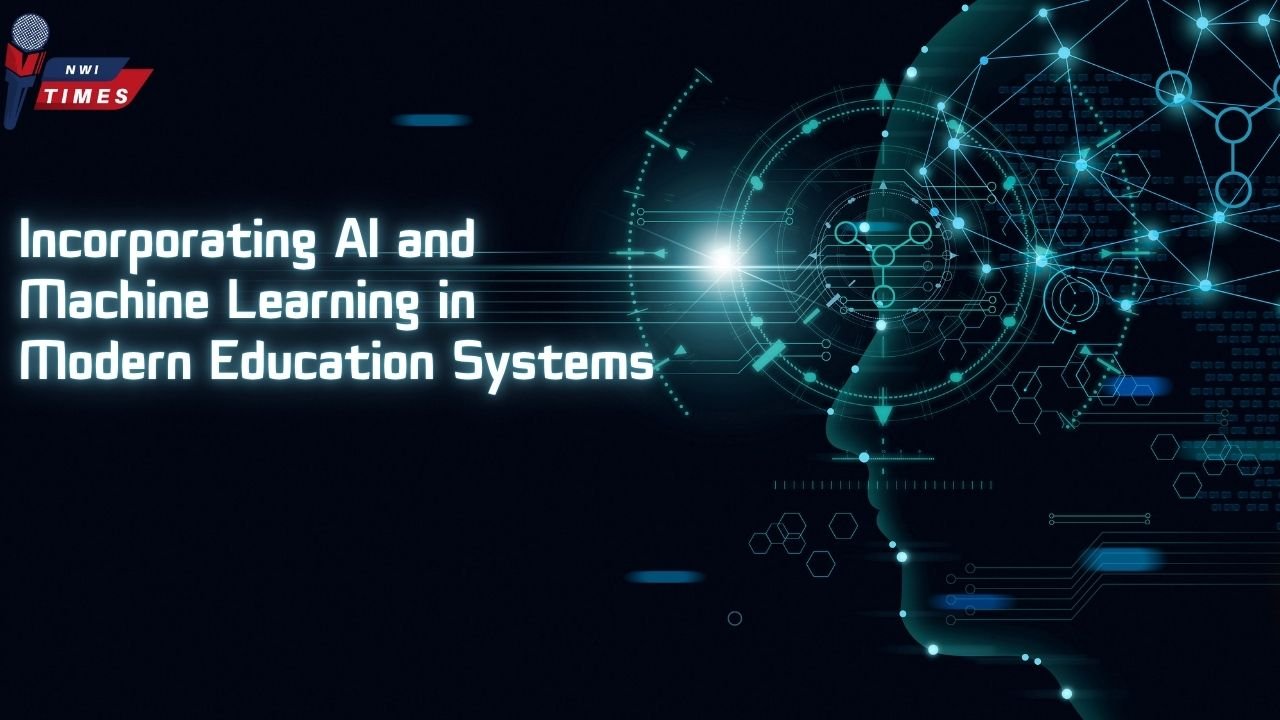Incorporating AI and Machine Learning in Modern Education Systems is rapidly transforming how schools function. AI enables machines to replicate human activities, while machine learning allows systems to evolve by learning from data. In education, these technologies are automating repetitive tasks like grading, creating more personalized learning experiences, and enhancing decision-making. AI tools help teachers by analyzing vast amounts of student data, predicting academic outcomes, and offering tailored solutions. Machine learning algorithms identify patterns in students’ behavior, aiding in customizing educational content for maximum effectiveness.
How Is AI Currently Used in Education?
Incorporating AI and Machine Learning in Modern Education Systems has led to the rise of adaptive learning platforms. These systems tailor lessons based on student performance, providing content that matches each learner’s style and speed. AI-driven tools streamline administrative tasks like scheduling and grading, allowing teachers to spend more time with their students. AI-powered chatbots are becoming common, assisting with student questions and clarifying concepts, especially in online courses. AI is also critical for maintaining academic integrity in remote learning through tools like virtual proctoring.
Can AI and Machine Learning Help Personalized Learning?
Incorporating AI and Machine Learning in Modern Education Systems plays a major role in personalized learning. These technologies evaluate students’ unique learning styles, strengths, and areas of improvement, delivering content customized to individual needs. For instance, if a student excels in reading but struggles with math, AI-powered tools can focus more on math exercises. Conversely, students excelling in certain areas can be given more advanced material. Personalized learning enabled by AI makes education more effective, addressing the specific needs of every learner.
How Do AI-Powered Tutoring Systems Work?
AI tutoring systems are an excellent example of incorporating AI and Machine Learning in Modern Education Systems. These AI tutors provide real-time feedback and tailored guidance to students. They are programmed to detect common mistakes and offer explanations to help students grasp challenging concepts. For example, an AI tutor may guide a student through difficult math problems by identifying errors and offering solutions. AI tutoring systems can adapt as the student progresses, ensuring a continuous loop of learning and feedback.
What Are the Benefits of AI for Teachers?
Incorporating AI and Machine Learning in Modern Education Systems provides significant benefits for teachers. AI reduces the time teachers spend on repetitive tasks like grading and attendance tracking, allowing them to concentrate on student engagement and lesson development. AI tools can identify which students are struggling or excelling, providing teachers with the data needed to intervene early or offer extra challenges. AI can even generate reports that help teachers monitor student progress throughout the year, leading to more informed teaching strategies.
Can AI Improve Student Engagement?
Incorporating AI and Machine Learning in Modern Education Systems can significantly boost student engagement. One way AI achieves this is through gamification, where lessons are transformed into games that encourage student participation. These tools incorporate challenges, points, and rewards to make learning more enjoyable. AI-driven learning apps adjust difficulty levels based on student performance, ensuring content remains engaging and appropriately challenging. By involving students in their learning process, AI makes education both more interactive and more effective.
What Are the Challenges of Using AI in Education?
While incorporating AI and Machine Learning in Modern Education Systems brings numerous benefits, it also presents some challenges. One of the biggest hurdles is the cost of implementing AI tools, as they require substantial financial investment. There are also concerns about data privacy, as AI relies heavily on gathering and analyzing student information. Schools must take steps to protect this data and ensure it is used responsibly. Training teachers to use AI effectively is another challenge, as it requires time and resources to ensure educators are comfortable with the technology.
What Does the Future Hold for AI in Education?
The future of incorporating AI and Machine Learning in Modern Education Systems looks promising. AI and machine learning are expected to become even more integrated into classrooms, leading to highly personalized learning experiences. Technologies like virtual reality (VR) and augmented reality (AR), powered by AI, could bring historical events or scientific experiments to life, creating immersive and engaging learning environments. As AI continues to evolve, it will play a critical role in helping teachers and students achieve more, shaping the future of education.
What Are the Benefits of AI and Machine Learning in Education?
| Benefits of AI in Education | Description |
| Personalized learning | AI adjusts lessons to fit each student’s individual learning style. |
| Time-saving for teachers | AI manages grading and attendance, giving teachers more time to focus on students. |
| Instant feedback for students | AI provides real-time responses to student questions and issues. |
| Improved student engagement | Gamified lessons and interactive content keep students involved in learning. |
| Early identification of struggling students | AI identifies performance patterns and offers early intervention suggestions. |
| Remote learning support | AI enables more effective online learning through virtual tutors and chatbots. |
How Can Schools Prepare for AI Integration?
To successfully incorporate AI and Machine Learning in Modern Education Systems, schools need to prepare thoroughly. Training teachers to use AI tools effectively is a key step, as they must understand how to incorporate these technologies into their lessons. Schools must also invest in the necessary infrastructure, such as reliable internet access and up-to-date computers, to support AI-powered tools. Schools should also develop strong data privacy policies to protect student information. Proper planning and preparation can ensure that the transition to AI-based education is smooth and beneficial for both students and teachers.
Incorporating AI and Machine Learning in Modern Education Systems is not merely about adopting new technology; it’s about fundamentally improving how students learn and how teachers teach. These tools offer personalized, efficient, and interactive learning experiences that can revolutionize education. By preparing schools and teachers, the potential for AI to enhance education is enormous. As AI continues to evolve, its role in modern education systems will only grow, making classrooms more dynamic and responsive to individual student needs.
Conclusion
Incorporating AI and Machine Learning in Modern Education Systems is transforming the way students learn and teachers teach. These technologies offer personalized learning, automate administrative tasks, and provide real-time feedback, making education more efficient and engaging. While there are challenges, such as cost and data privacy concerns, the benefits, including improved student engagement and better academic outcomes, are clear. As AI continues to develop, its role in shaping education will only grow, helping schools create more tailored learning experiences that meet the needs of every student.



